Related Tags
Chord Clinic: Learn to play 10 interesting G major chord variations
We’re taking a look at some interesting shapes and variations on the trusty G major chord.
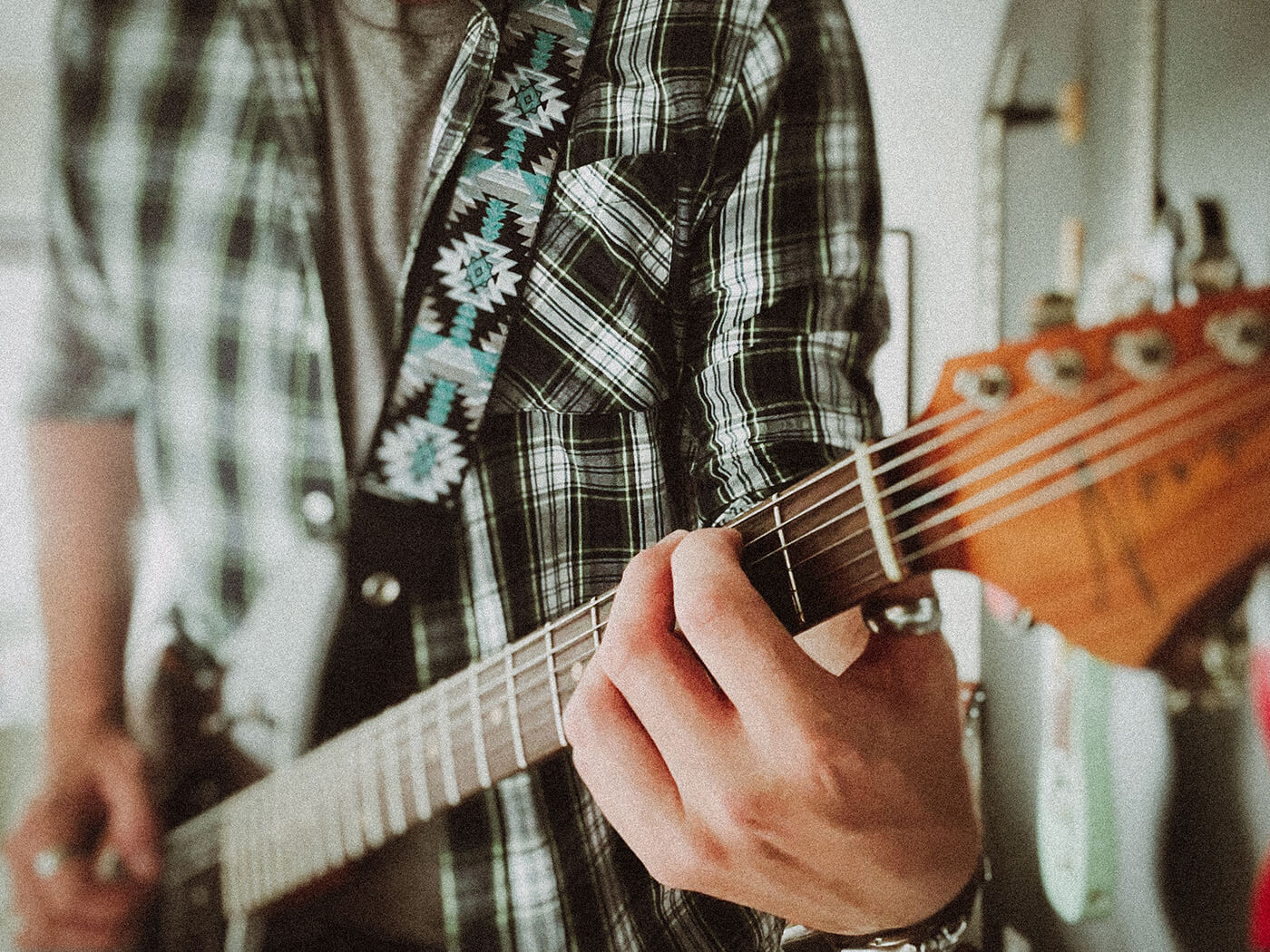
In its basic form, G major is not the easiest chord to hold down on guitar, involving a big stretch across the fingerboard that can be a challenge to beginners. It’s worth persevering with, however, as G major has great potential as a key; C major and D major (chords IV and V in the key) are available as open string chords, as are chords II and VI, A minor and E minor. This means all the essential chords in the key of G are easy to play without using a barre.
As a result, G is very popular key with singer-songwriters. Equipped with a capo to transpose to a key that suits your voice, huge numbers of new and exciting or old and existing songs will fall under your fingers.
The notes of G major are G, B and D. These are the root, major third and perfect fifth, steps one, three and five of a G major scale. The way that G major fits on the guitar makes it easy to flavour the basic chord with interesting notes like sixths, sevenths and ninths. Enjoy exploring these chords – see you next month.
Figure 1
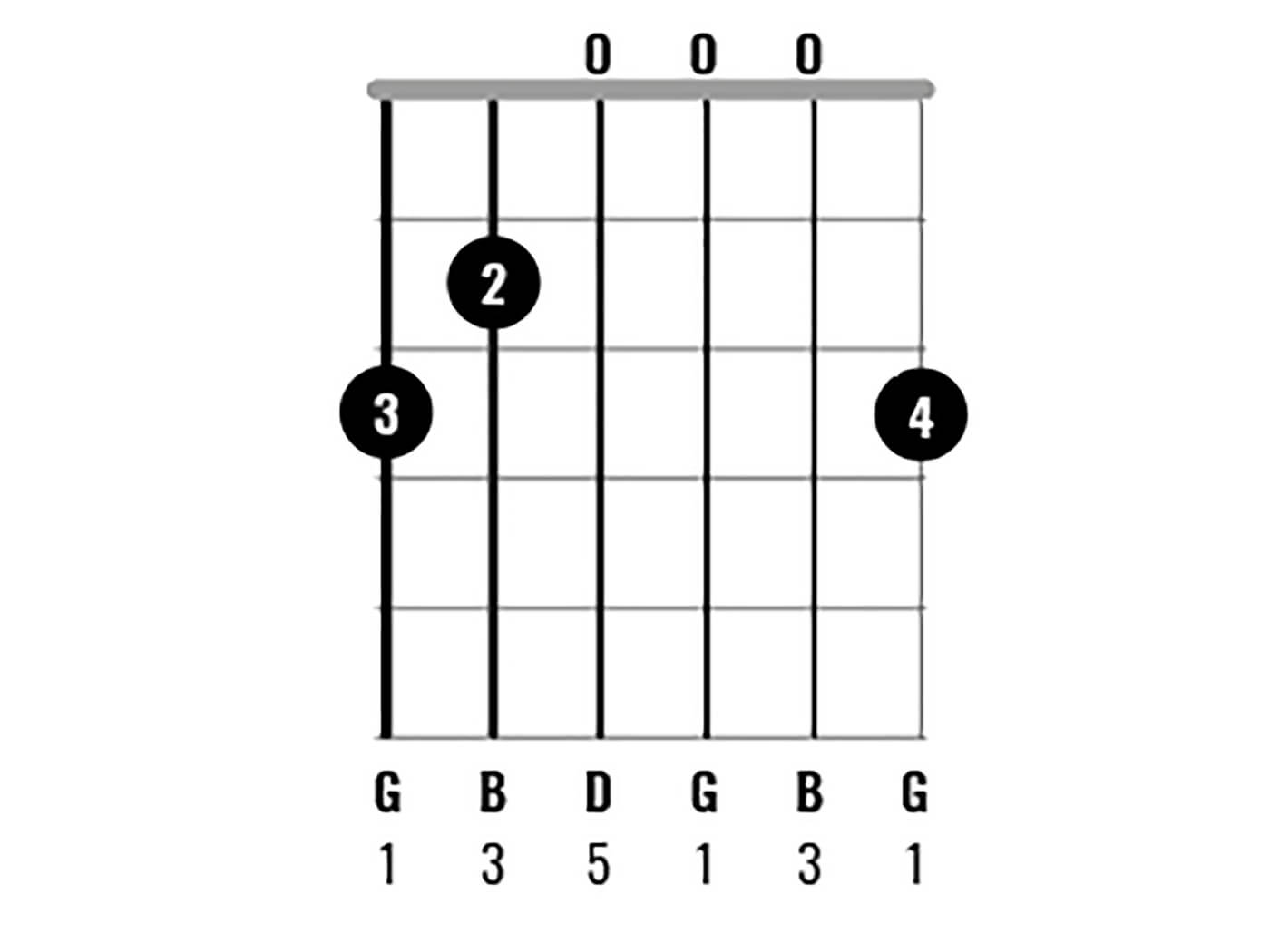
The basic cowboy chord G major requires careful fingering to avoid muting strings with the underside of fingers, so check you are hearing all six strings. We are using fingers two, three and four, which is harder than one, two and three, but it makes it much easier to change to C major, which in this key is likely to happen often.
Figure 2

Some guitarists find the low B troubling; in classical teaching doubling the major third in a chord is considered poor practice although examples of it abound. Leaving out the low B cleans out the low end and makes the chord easier to play, provided you can mute the A string with the underside of finger three. In general, we like this voicing more.
Figure 3

Another way of avoiding the doubled third is to double the fifth instead. The fifth has a hollower quality and doesn’t suffer from the turgidness of a major third, and there is energy and power in this voicing, which makes it the go-to version of G for many players. It sounds great with a capo on the second fret or higher and is one of the chords in the iconic Wonderwall.
Figure 4

Though not technically G major we couldn’t resist including this G5 (“G five”) chord which does away with a major third altogether as it contains just roots and fifths. 5-chords have an open ringing quality which means they cope better with distortion than their major chord equivalents. Do you feel a Lynyrd Skynyrd riff coming on?
Figure 5
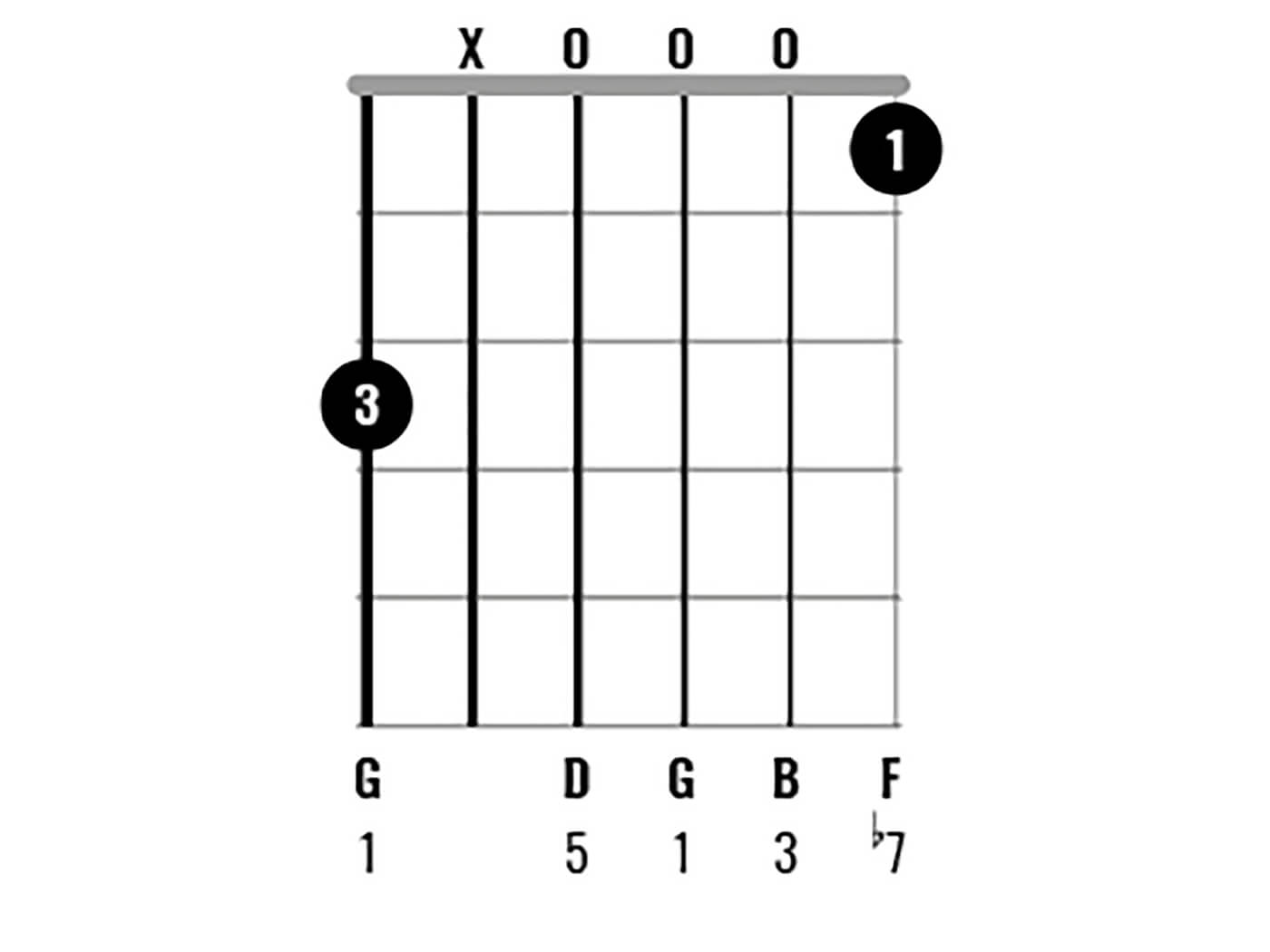
When you add a minor seventh to a major chord you get a seventh chord; in this case we have added F to make G7. We used figure 2 as a starting point, but it works with figure 1 as well. G7 is chord V in C, so try playing a C major chord after G7 and you’ll hear chord V resolving to chord I. This works because the tension between the notes B and F in the G7 chord is resolved when they arrive on C and E.
Figure 6
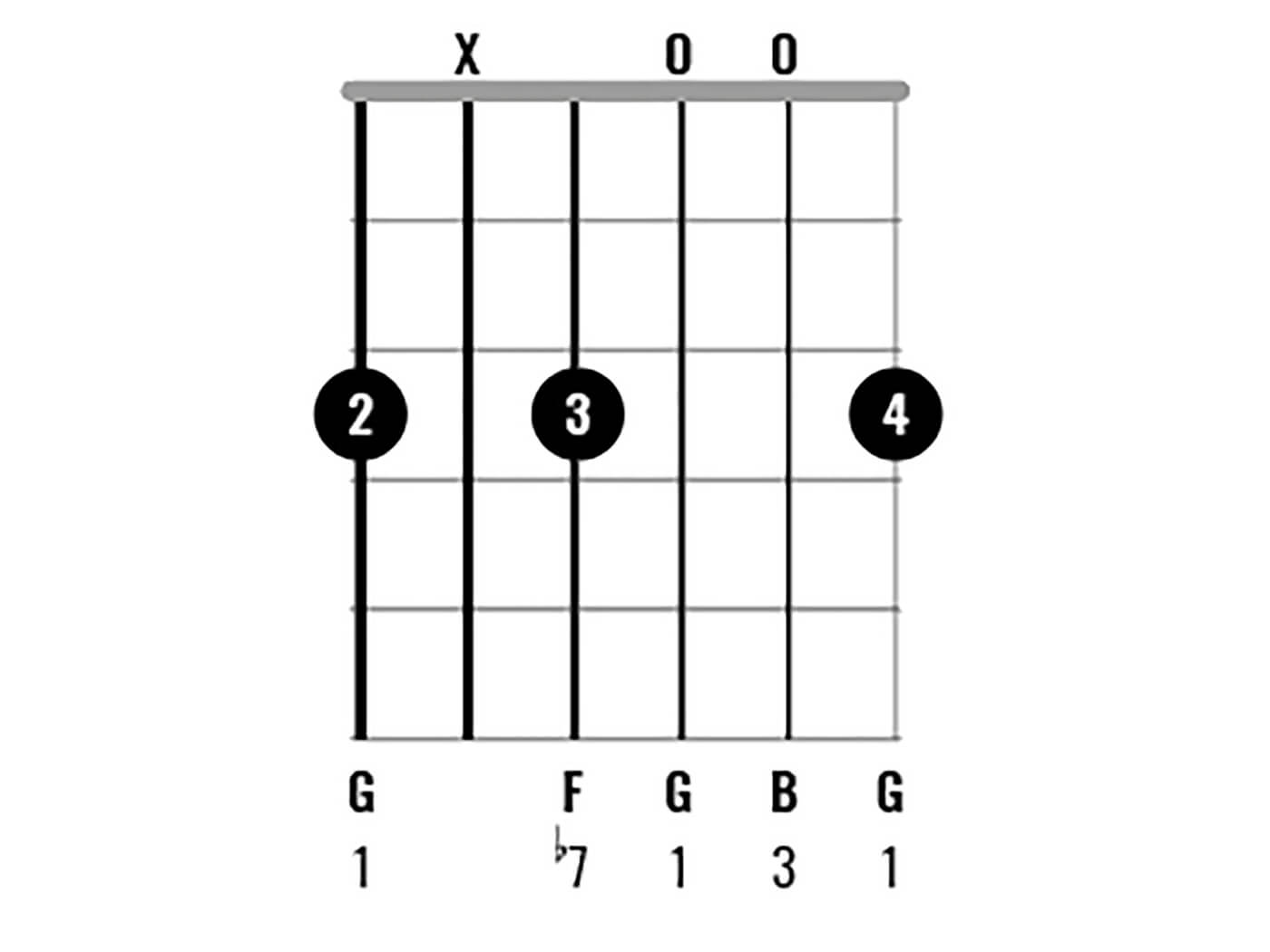
The high F in figure 5 can sound piercing, and we like the idea of moving the interesting note in a chord to the lower octave. Here, we’ve moved the F to the D string. Try switching to a C major chord again, this time leaving your fourth finger on the high G on the top string. It works particularly well if you can pick an alternating bass with your thumb and arpeggios with your fingers.
Figure 7

Technically, a 13th chord should include the ninth, but guitarists often dodge such details when a good voicing falls under the fingers, especially if it means simply releasing a finger from the chord. Some theorists would describe this chord as G7/6, the sixth coming from the open E string. Try following this one with C major seven for a dreamy V – I progression where the top notes of the chord stay the same.
Figure 8

Here you get the full fat 13th chord, with the ninth added on the G string. This also sounds good followed by Cmaj7, but this time see if you can keep the A on the G string sounding in both chords, so that the C major chord becomes Cmaj13. This C chord would be a 13th which omits the ninth. Though these are jazzy chords there’s a breeziness to these open string voicings reminiscent of Neil Young or Paul Simon’s more romantic moments.
Figure 9
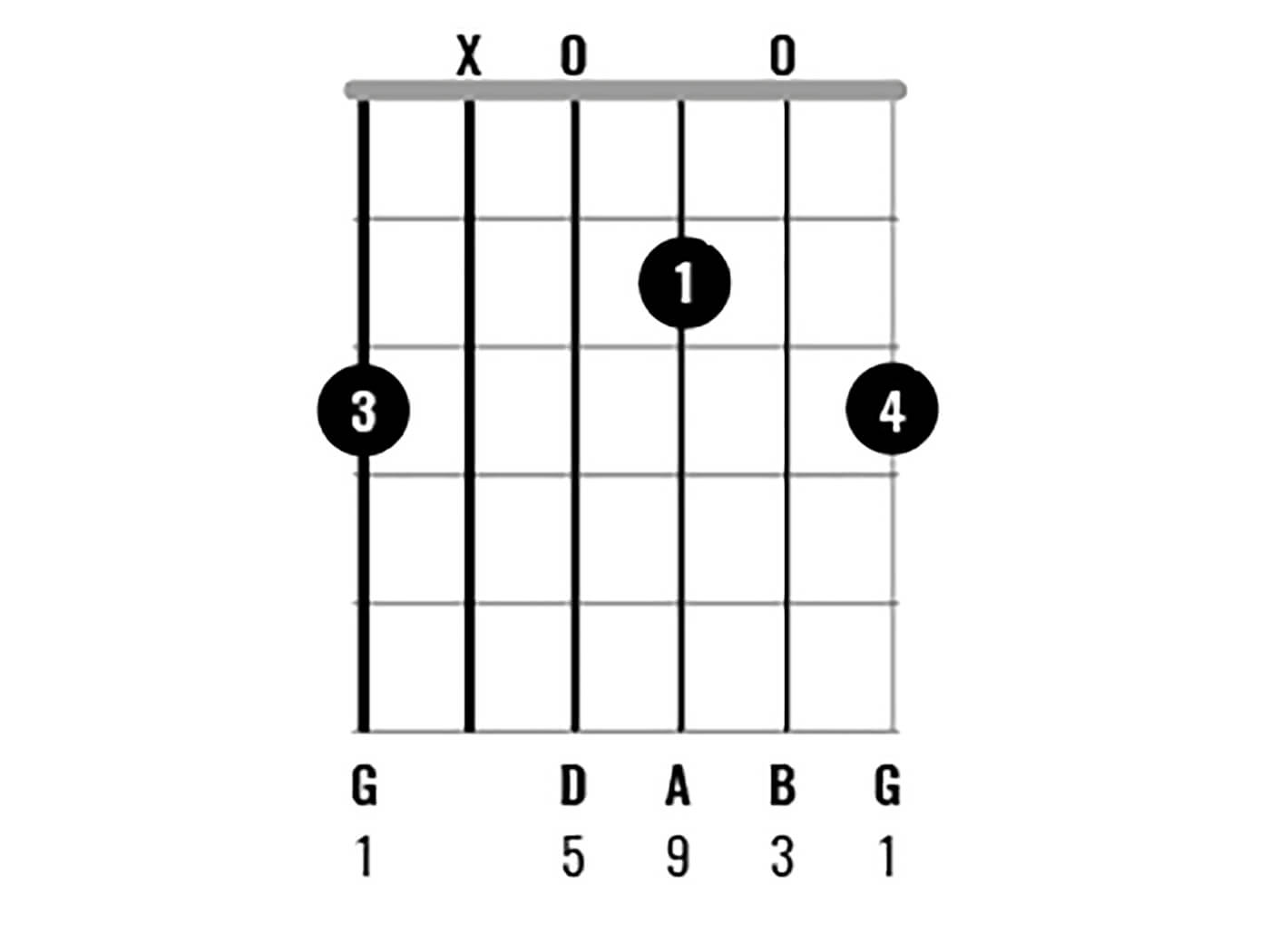
We’ve kept the A on the G string here but added it to the basic G chord. This makes Gadd9, which is useful if you are playing a G chord and want to add interest without disturbing the essential harmony. You can add and release the A note to create movement, and try letting the top string ring open to alternate between G6 and G6/9. With some adjustment to the fingering you could use this note to add movement to many of the above chords, such as figure 5, the G7 chord.
Figure 10
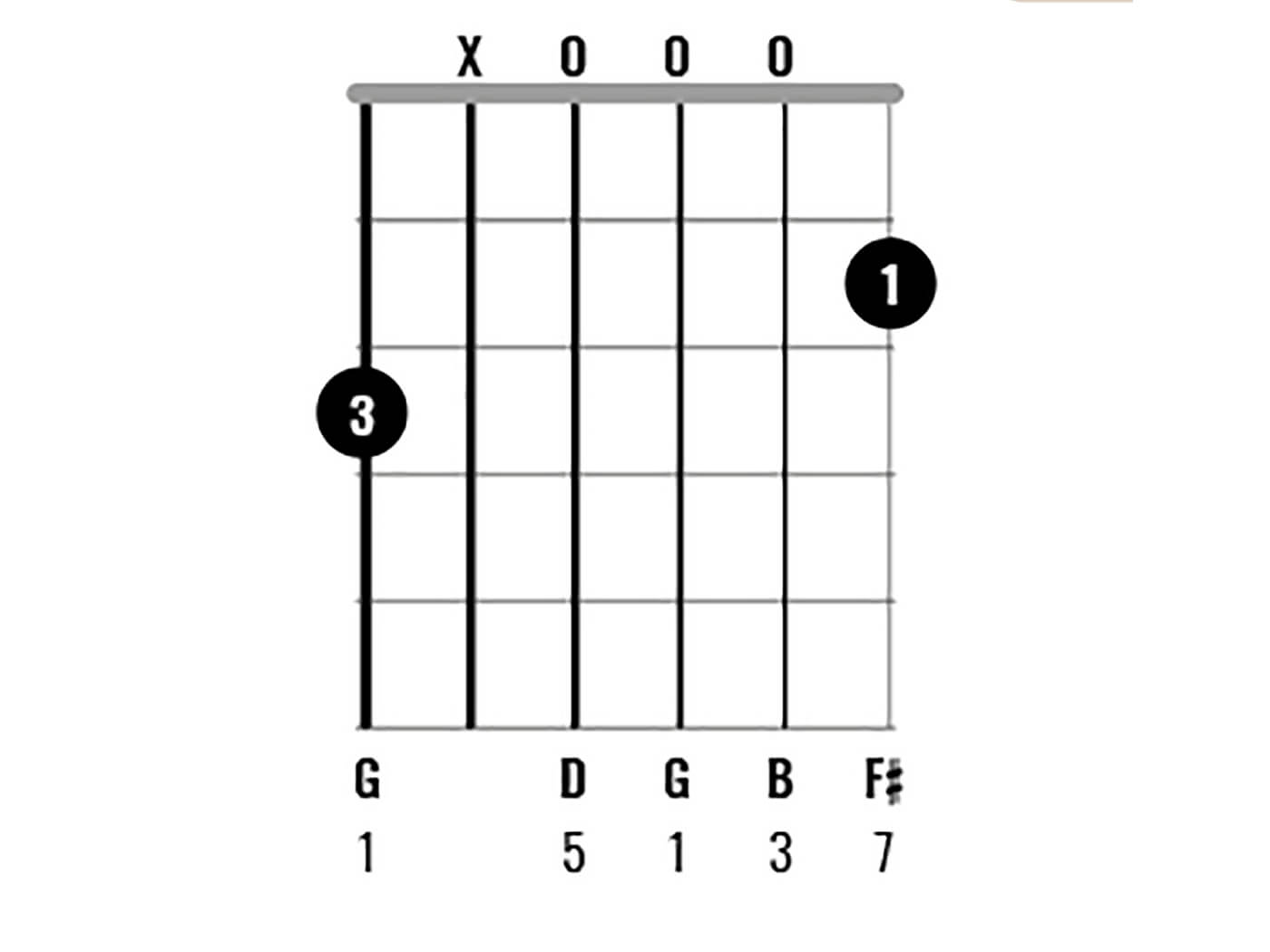
F sharp is the major seventh over G, so you won’t be surprised that adding it to G major makes a G major seven chord. This is one of the chords which gives the intro to Billie Eilish’s idontwannabeyouanymore its wistful and dreamy quality, a property of major sevenths generally. Try playing G, Gmaj7, G7 before going on to C and C minor to hear how these chords can work together.
About the author
Rod Fogg is a London-based guitarist, teacher and writer. He is the author of The Ultimate Guitar Course (Race Point 2014), the Electric Guitar Handbook (Backbeat, 2009) and contributed to bestseller The Totally Interactive Guitar Bible (Jawbone Publishing, 2006).
Find out more at rodfogg.com.
